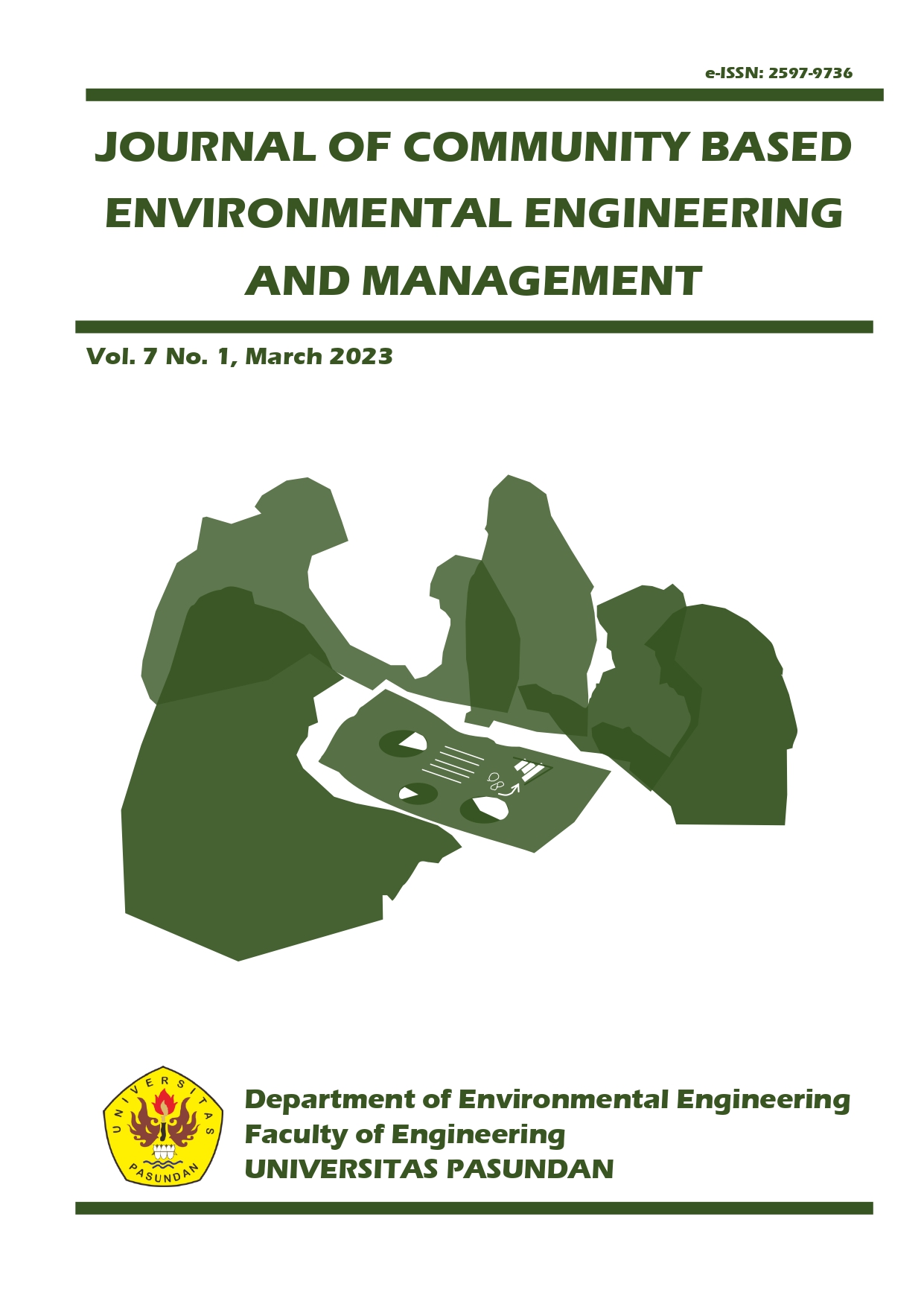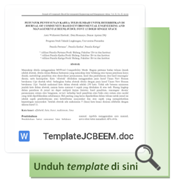Analysis of the Load Carrying Capacity of BOD and COD Pollutants in The Krukut River
DOI:
https://doi.org/10.23969/jcbeem.v7i1.7251Keywords:
BOD, COD, carrying capacity, Krukut River, pollutant loadAbstract
Krukut River is one of the rivers that has an important role to support the activities of the residents of Jakarta City. Krukut River has a length of 44.3 km. In 2015 the Krukut River was the target of a master plan for improving river water quality in Jakarta by Regional Environmental Management Agency (BPLHD) DKI Jakarta but in fact there was a decline in river water quality due to increasing population growth so that monitoring activities are needed. The purpose of the study is to identify the polluting sources of the Krukut River, analyze the water quality of the river, determine the pollutant load. The research parameters used are Biological Oxygen Demand (BOD) and Chemical Oxygen Demand (COD). Sampling in the Krukut River was carried out using the grab sampling method in September, October, November 2021 divided into 9 segments consisting of 9 non-point sources and 5 point sources. Non-point sources of pollutants are obtained from domestic waste dominated by residential areas, as well as food stalls, point source of pollutants are obtained from drainage channels, Mampang River, Ciliwung River, Cideng Channel and Krendang River. Pollutant load carrying capacity for BOD and COD concentrations in the Krukut River were respectively 292.896-622.592 kg/day and 2440.8-13521.6 kg/day. The pollutant load for BOD and COD concentrations in the Krukut River were respectively 2601.3-13792.2 kg/day and 3139.1-16542.6 kg/day.
Downloads
References
BPLHD DKI Jakarta (Badan Pengelolaan Lingkungan Hidup) DKI Jakarta. 2015. Buku Status LingkunganHidup Daerah DKI Jakarta Tahun 2015.
Hakki, W. (2015). Dampak Pemanfaatan Bantaran Sungai terhadap Kualitas Lingkungan di Kelurahan Pasar Krui. Universitas Lampung.
Hossain, M.D., Hanafi, M.M., Talib, J. & Jol, H. (2010). Effects of Nitrogen, Phosphorus and Potassium Levels on Kenaf (Hibiscus cannabinus L.) Growth and Photosynthesis under Nutrient Solution. Journal of Agricultural Science, 2(2), 49-57.
Irsanda, P. G., Karnaningroem, N., Bambang, D. (2014). Analisis Daya Apung Beban Pencemaran Kali PalayaranKabupaten Sidoarjo dengan Metode QUAL2KW, Surabaya: Institut Teknologi Sepuluh Nopember.
Muliawan, A. K., Kusumadewi R. A., Fachrul M.F. (2022). Analysis of Contaminant Load Capacity of Nitrate and Phosphate in Krukut River. Journal of Community Based Environmental Engineering and Management, 6(2), 65-72.
Peraturan Pemerintah Republik Indonesia Nomor 22 Tahun2021 Tentang Penyelenggaraan Perlindungan dan Pengelolaan Lingkungan Hidup
Rachmawati, I. P., Riani, E., & Riyadi, A. (2020). Water quality status and load pollution Krukut River, DKI Jakarta. Jurnal Pengelolaan Sumberdaya dan Lingkungan, 10(2), 220-233.
Zhang, W., Hongjie, Ji, Kolbe, H., et al. (2014). China’s Agricultural Non point Source Pollution Situation Estimation and Control Countermeasures II: Agricultural Non point Source Pollution Status and Control in European and American Countries. Chin. Agric. Sci., 37(7), 1018–1025.














